|
Books Should Be Free Loyal Books Free Public Domain Audiobooks & eBook Downloads |
|
|
Books Should Be Free Loyal Books Free Public Domain Audiobooks & eBook Downloads |
|
Adventure Books |
|---|
|
Book type:
Sort by:
View by:
|
By: Robert Michael Ballantyne | |
|---|---|
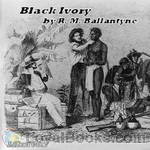 Black Ivory
Black Ivory
Although the book's title Black Ivory denotes dealing in the slave trade it is not our heroes who are doing it. At the very first chapter there is a shipwreck, which leaves the son of the charterer of the sinking ship, and a seaman friend of his, alone on the east coast of Africa, where Arab and Portuguese slave traders were still carrying out their evil trade, despite the great efforts of patrolling British warships to limit it and free the unfortunates whom they found being carried away in the Arab dhows... | |
 My Doggie and I
My Doggie and I
This story surrounds a child waif, a young woman, a young gentleman doctor, and an elderly lady. This tale unfolds the story of a bond that brings these unlikely friends together and merges their separate paths of life into one common path. The bond is "Dumps", or "Pompey", the "doggie". With many twists, turns, and uncertainties, the ending may surprise the reader. All's well that ends well in this doggie "tail". (Introduction by Allyson Hester) | |
By: Beatrix Potter (1866-1943) | |
|---|---|
 Great Big Treasury of Beatrix Potter
Great Big Treasury of Beatrix Potter
Whether you're a parent or a child, a young reader or an older one, the Great Big Treasury of Beatrix Potter is indeed just that – a treasure chest of delightful, charming little stories full of animals and people. Beatrix Potter today has spawned a whole industry of merchandise, games and theme parks, but the stories remain as fresh and sparkling as they were when they first came out in 1901. The Great Big Treasury contains three collections compiled into one enchanting volume - The Giant Treasury of Peter Rabbit, Further Tales of Peter Rabbit and The Giant Treasury of Beatrix Potter... | |
By: Mary Roberts Rinehart (1876-1958) | |
|---|---|
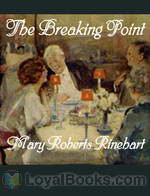 The Breaking Point
The Breaking Point
Mary Roberts Rinehart -- "America's Agatha Christie," as she used to be called -- set this story in a New York suburban town, shortly after the end of the first world war. Dick Livingstone is a young, successful doctor, who in the course of events becomes engaged to Elizabeth Wheeler. But there is a mystery about his past, and he thinks himself honor-bound to unravel it before giving himself to her in marriage. In particular, a shock of undetermined origin has wiped out his memory prior to roughly the last decade... | |
 More Tish
More Tish
Mary Roberts Rinehart wrote 6 books about the elderly Letitia (Tish) Carberry and the escapades she gets her elderly lady cronies into. The series led to a 1942 movie with Marjorie Main. This particular book, the third in the series, was written after Mary's stint as a war correspondent in Belgium during the first World War. | |
By: John Muir | |
|---|---|
 Travels in Alaska
Travels in Alaska
In 1879 John Muir went to Alaska for the first time. Its stupendous living glaciers aroused his unbounded interest, for they enabled him to verify his theories of glacial action. Again and again he returned to this continental laboratory of landscapes. The greatest of the tide-water glaciers appropriately commemorates his name. Upon this book of Alaska travels, all but finished before his unforeseen departure, John Muir expended the last months of his life. | |
By: William Makepeace Thackeray (1811-1863) | |
|---|---|
 Virginians
Virginians
It tells the story of Henry Esmond's twin grandsons, George and Henry Warrington. Henry's romantic entanglements with an older woman lead up to his taking a commission in the British army and fighting under the command of General Wolfe at the capture of Quebec. On the outbreak of the American War of Independence he takes the revolutionary side. George, who is also a British officer, thereupon resigns his commission rather than take up arms against his brother. | |
By: Murray Leinster (1896-1975) | |
|---|---|
 Space Tug
Space Tug
Joe Kenmore heard the airlock close with a sickening wheeze and then a clank. In desperation he turned toward Haney. “My God, we’ve been locked out!” Through the transparent domes of their space helmets, Joe could see a look of horror and disbelief pass across Haney’s face. But it was true! Joe and his crew were locked out of the Space Platform. Four thousand miles below circled the Earth. Under Joe’s feet rested the solid steel hull of his home in outer space. But without tools there was no hope of getting back inside. Joe looked at his oxygen meter. It registered thirty minutes to live. | |
 The Mad Planet
The Mad Planet
It is 30,000 years following dramatically changed climate conditions on earth which had let massive amounts of carbon dioxide belch from the interior of the planet into the atmosphere. Over the millenia this would have quite devastating effects on life as it had once been known. Much of the human and animal population would not survive the climate change, and indeed those few humans who did survive knew nothing of all which their predecessors had learned and built. Indeed, they knew not even of their existence... | |
 Operation: Outer Space
Operation: Outer Space
Jed Cochrane is about to take off on man's first interstellar voyage. His mission: Make sure it's good television! (Introduction by Mark Nelson) | |
 Space Platform
Space Platform
SPACE PLATFORM tells the exciting story of a young man helping to build this first station. With scientific accuracy and imagination Murray Leinster, one of the world's top science-fiction writers, describes the building and launching of the platform. Here is a fast-paced story of sabotage and murder directed against a project more secret and valuable than the atom bomb! | |
By: Edith Nesbit (1858-1924) | |
|---|---|
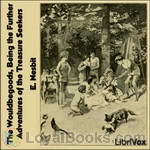 The Wouldbegoods, Being the Further Adventures of the Treasure Seekers
The Wouldbegoods, Being the Further Adventures of the Treasure Seekers
The Bastable children, first met in The Treasure Seekers, are sent to stay in the countryside; is it large enough to contain their exuberant activities? They (and Pincher the dog) have every intention of being good… | |
By: Horatio Alger, Jr. (1832-1899) | |
|---|---|
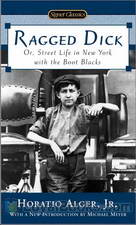 Ragged Dick
Ragged Dick
A fourteen year old homeless boy, Dick, tries to make an honest living in the streets of 1860s New York as a bootblack. He is determined to stay honorable, though he is tempted many times to easy pickings and a life of crime. When a regular customer is impressed by Dick's integrity and invites him to his mansion, this marks a turning point in the life of the young street-smart teenager. Ragged Dick by Horatio Alger Jr was first published in 1868. It represents a typical coming of age story in which a child attains the maturity of adulthood through circumstances in which important choices are made... | |
By: John Buchan (1875-1940) | |
|---|---|
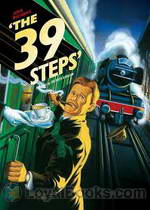 The Thirty-nine Steps
The Thirty-nine Steps
The typical action hero with a stiff upper lip whose actions speak louder than his words, a mysterious American who lives in dread of being killed, an anarchist plot to destabilize Greece, a deadly German spy network, a notebook entirely written in code, and all this set in the weeks preceding the outbreak of World War I. The Thirty-nine Steps, by John Buchan is a spy classic entirely worthy of its genre and will delight modern day readers with its complicated plot. It is also notable for being the literary progenitor of the spook novel that typically features the secret operative on the run, determined to unravel a world domination plot... | |
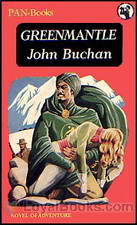 Greenmantle
Greenmantle
Greenmantle is the second of five Richard Hannay novels by John Buchan, first published in 1916 by Hodder & Stoughton, London. It is one of two Hannay novels set during the First World War, the other being Mr Standfast (1919); Hannay’s first and best-known adventure, The Thirty-Nine Steps (1915), is set in the period immediately before the war started. – Hannay is called in to investigate rumours of an uprising in the Muslim world, and undertakes a perilous journey through enemy territory to meet up with his friend Sandy in Constantinople. Once there, he and his friends must thwart the Germans’ plans to use religion to help them win the war, climaxing at the battle of Erzurum. | |
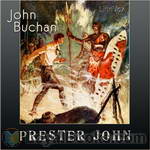 Prester John
Prester John
This classic adventure novel by the author of Greenmantle and The Thirty-Nine Steps relates the first-person exploits of young David Crawfurd before the age of twenty. | |
By: Robert W. Service (1874-1958) | |
|---|---|
 Selections from Ballads of a Cheechako
Selections from Ballads of a Cheechako
These twelve poems are from Ballads of a Cheechako which was Robert W. Service’s third book of Yukon poems, published in 1909. The word Cheechako, from Chinook Jargon, originated in the United States (Alaska) and Canada (Yukon) and was imported into local English during the Yukon gold rush that began in 1896. Cheechako, is a non derogatory word meaning “newcomer” or “tenderfoot.” The derivation looks something like this: chee new cha come ko home. | |
 Ottawa Folk Festival Robert Service Collection
Ottawa Folk Festival Robert Service Collection
The Spell of the Yukon by Robert Service with patrons, musicians and organizers. Robert Service is an iconic Canadian poet. | |
By: Susanna Moodie (1803-1885) | |
|---|---|
 Roughing It in the Bush
Roughing It in the Bush
'Roughing It In the Bush' is Susanna Moodie's account of how she coped with the harshness of life in the woods of Upper Canada, as an Englishwoman homesteading abroad. Her narrative was constructed partly as a response to the glowing falsehoods European land-agents were circulating about life in the New World. Her chronicle is frank and humorous, and was a popular sensation at the time of its publication in 1852. | |
By: Sinclair Lewis (1885-1951) | |
|---|---|
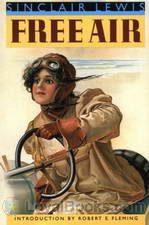 Free Air
Free Air
This road trip novel is set in the early twentieth century and follows the experiences of an aristocratic New Englander and her father as they travel by automobile from Minneapolis to Seattle. She is wooed and won by a noble but simple commoner she meets along the way. Lewis is at his usual wryly humorous self, poking fun at the upper class and treating the common people only slightly better. | |
By: Charles Kingsley (1819-1875) | |
|---|---|
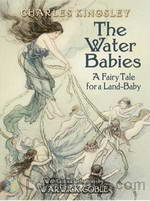 The Water-Babies
The Water-Babies
First published in 1863, The Water Babies by Rev Charles Kingsley became a Victorian children's classic along with J.M. Barrie's Peter Pan and Lewis Caroll's Alice books. It is an endearing and entertaining novel that can equally be enjoyed by adult readers as well. However, it fell out of favor in later years since it contained many ideas that are considered politically incorrect and offensive today from a humanitarian perspective. The Water Babies, A Fairy Tale for a Land Baby to give the book its complete title tells the story of Tom, a young orphan chimney-sweep in Victorian London... | |
By: Joshua Slocum (1844-1909) | |
|---|---|
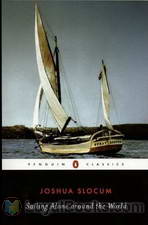 Sailing Alone Around the World
Sailing Alone Around the World
A sailing memoir written by seaman and adventurer Joshua Slocum, who was the first person to sail around the world alone, documents his epic solo circumnavigation. An international best-seller, the book became a great influence and inspiration to travelers from each corner of the globe. Additionally, Slocum is an example that through determination, courage and hard work any dream can easily become a reality. Written in a modern and conversational tone, the autobiographical account begins with Slocum’s description of his hometown of Nova Scotia and its maritime history... | |
By: Sir Arthur Conan Doyle (1859-1930) | |
|---|---|
 The Mystery of Cloomber
The Mystery of Cloomber
This novel is written by the author of, among other novels, the Stories of Sherlock Holmes. It is narrated by John Fothergill West, who tries to discover why the tenant of Cloomber Hall, General Heatherstone, is nervous to the point of being paranoid. Why are his fears becoming stronger every year at the fifth of October? And why doesn't he let his children leave home? This is a great mystery novel with a sharp twist at the end. | |
 Uncle Bernac: A Memory of the Empire
Uncle Bernac: A Memory of the Empire
Looking for a replacement to Sherlock Holmes after the author had killed him off in 1894, Doyle wrote this murder mystery in the dying years of the 19th century. Set in Napoleon’s era, it involves a Frenchman returning to his native land to join the Emperor’s ranks. | |
 Captain of the Polestar, and other tales
Captain of the Polestar, and other tales
This is a collection of early Sir Arthur Conan Doyle short stories. It includes stories of mystery, comedy, shipwrecks and fantasy. | |
 Desert Drama: Being the Tragedy Of The Korosko
Desert Drama: Being the Tragedy Of The Korosko
Also published under the title The Tragedy of the Korosko (1898). A group of European tourists are enjoying their trip to Egypt in the year 1895. They are sailing up the River Nile in a "a turtle-bottomed, round-bowed stern-wheeler", the Korosko. They intend to travel to Abousir at the southern frontier of Egypt, after which the Dervish country starts. They are attacked and abducted by a marauding band of Dervish warriors. The novel contains a strong defence of British Imperialism and in particular the Imperial project in North Africa. It also reveals the very great suspicion of Islam felt by many Europeans at the time. | |
 Doings of Raffles Haw
Doings of Raffles Haw
The people of the small town of Tamfield are not used to exciting things happening. When millionaire Raffles Haw moves to town, rumors spread like wildfire about him. The advent of Mr. Haw, however, changes the town, and particularly the lives of the McIntyre family, in ways no one could ever have guessed. | |
By: Anthony Hope (1863-1933) | |
|---|---|
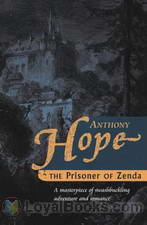 The Prisoner of Zenda
The Prisoner of Zenda
There's a handsome young man about town in London, whose unusual good looks hint about a scandalous ancestry. On a visit to a tiny East European principality, he decides to take a walk through a dense forest. He falls asleep under a tree and is discovered by the king and his entourage who are out hunting. Both are stunned by their startling resemblance to each other. The king who is days away from his grand coronation invites the Englishman back to his castle and here the visitor becomes embroiled in a sinister plot to overthrow the monarch and usurp the throne... | |
 Rupert of Hentzau
Rupert of Hentzau
This is the sequel to ‘The Prisoner of Zenda‘. Five years have passed. The King has become jealous of Rudolf Rassendyll and suspicious of the queen (Flavia)’s feelings towards him. Flavia decides that this must be the last year in which she sends to Rudolf the single red rose that betokens her love, and therefore she also sends via Fritz von Tarlenheim, her letter of good-bye. Count Rupert of Hentzau, banished from Ruritania after the incidents of the earlier book, is plotting his return. In furtherance of his scheme he obtains both letter and rose, and plots to place them before the King. Rudolf, Fritz and Sapt must prevent this at all costs… | |
By: Arthur Scott Bailey (1877-1949) | |
|---|---|
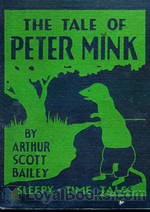 The Tale of Peter Mink
The Tale of Peter Mink
Arthur Scott Bailey (1877 – 1949) was author of more than forty children’s books. Bailey’s writing has been described thusly by the Newark Evening News: “Mr. Bailey centered all his plots in the animal, bird and insect worlds, weaving natural history into the stories in a way that won educator’s approval without arousing the suspicions of his young readers. He made it a habit to never ‘write down’ to children and frequently used words beyond the average juvenile vocabulary, believing that youngsters respond to the stimulus of the unfamiliar.” | |
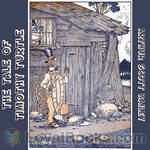 The Tale of Timothy Turtle
The Tale of Timothy Turtle
One of Bailey’s “Sleepy-Time Tales,” this is the story of Timothy Turtle, a grumpy old turtle trying to live his life alongside Black Creek. Timothy’s adventures lead him to encounters with other Black Creek creatures, Fatty Coon, Mr. Crow, Brownie Beaver, Peter Mink, Ferdinand Frog, and even the local boy, Johnnie Green. | |
 Tale of Miss Kitty Cat
Tale of Miss Kitty Cat
The rats and the mice thought that Miss Kitty Cat was a terrible person. She was altogether too fond of hunting them. They agreed, however, that in one way it was pleasant to have her about the farmhouse. When she washed her face, while sitting on the doorsteps, they knew—so they said!—that it was going to rain. And then Mrs. Rat never would let her husband leave home without taking his umbrella. As a rule Miss Kitty Cat didn't look at all frightful. Almost always she appeared quite unruffled, going about her business in a quiet way and making no fuss over anything... | |
 Tale of Henrietta Hen
Tale of Henrietta Hen
The Tale of Henrietta Hen is a cute children's book filled with the adventures of a hen named Henrietta. | |
By: Robert E. Howard (1906-1936) | |
|---|---|
 Red Nails
Red Nails
Conan the Cimmerian pursues the beautiful and deadly pirate Valeria after she kills a Stygian only to find himself cornered by a dragon. Apparently this dragon doesn’t know who he’s messing with. The pair then encounters the city of Xuchotl with its warring factions and ancient secrets. Swordplay and sorcery ensue. – Red Nails is Howard’s final Conan story and was published in the July, August, September and October 1936 issues of Weird Tales magazine | |
By: Ernest Shackleton | |
|---|---|
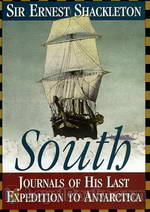 South! The Story of Shackleton's Last Expedition 1914-1917
South! The Story of Shackleton's Last Expedition 1914-1917
The expedition was given the grand title of The Imperial Trans-Antarctic Expedition. Due to be launched in 1914, two ships were to be employed. The first, the lead vessel, fittingly named the Endurance was to transport the team to the Weddell Sea from where the great explorer Ernest Shackleton and five others would cross the icy wastes of Antarctica on foot. The second ship, the Aurora was to approach the continent from the other side and put down supplies at various points to help the explorers... | |
By: Sir Walter Scott (1771-1832) | |
|---|---|
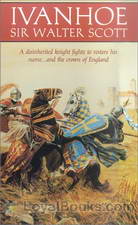 Ivanhoe
Ivanhoe
Medieval England in the 12th century. The evil Prince John rules England in place of his brother, the noble Richard the Lionheart, who is being held in an Austrian prison by Duke Leopold of Austria, while returning from one of his Crusades. Under the avaricious and Machiavellian John, the Norman aristocrats are in constant conflict with the native Saxon people. Ivanhoe by Sir Walter Scott is set in these turbulent times. The eponymous hero, Wilfred of Ivanhoe, the son of a Saxon nobleman has been disinherited by his father for following King Richard into war... | |
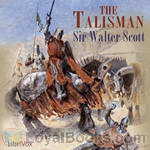 The Talisman
The Talisman
The Talisman is a gripping tale set near the end of the Third Crusade. King Richard the Lionheart is grievously ill, and all around him the leaders from allied countries plot and scheme to gain personal power, putting the future of the crusade in jeopardy. Sir Kenneth of Scotland finds himself caught up in events, and finds both his honour and his life are now on the line. Can a cure be found for the King? Can Kenneth redeem his honour? – Written by Rowen. | |
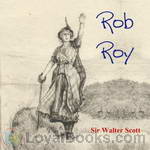 Rob Roy
Rob Roy
Rob Roy is a historical novel by Walter Scott. It is narrated by Frank Osbaldistone, the son of an English merchant who travels first to the North of England, and subsequently to the Scottish Highlands to collect a debt stolen from his father. On the way he encounters the larger-than-life title character of Rob Roy MacGregor. Though Rob Roy is not the lead character (in fact the narrative does not move to Scotland until half way through the book) his personality and actions are key to the development of the novel. | |
By: John Kendrick Bangs (1862-1922) | |
|---|---|
 R. Holmes and Co.
R. Holmes and Co.
Raffles Holmes is introduced in these stories as the son of the great Sherlock Holmes. He is also revealed to be the grandson of A.J. Raffles, a gentleman thief pursued by Sherlock Holmes many years earlier. This apparently contradictory family background sets the stage for his colorful and amusing adventures. | |
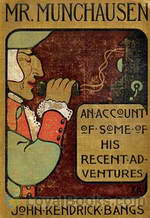 Mr Munchausen
Mr Munchausen
The author has discovered for us in this volume the present stopping place of that famous raconteur of dear comic memory, the late Hieronymous Carl Friederich, sometime Baron Munchausen, and he transmits to us some further adventures of this traveler and veracious relator of merry tales. There are about a dozen of these tales, and, judging by Mr. Bangs' recital of them, the Baron's adventures on this mundane sphere were no more exciting than those he has encountered since taking the ferry across the Styx... | |
 Toppleton's Client
Toppleton's Client
A pre-eminent legal firm gets far more than it bargained for when it hires the son of its late senior partner, Hopkins Toppleton, Sr., simply to retain the illustrious family name on the company masthead. Knowing Jr. is a loose cannon, their strategy is to pack him off to the UK to head up a European branch of the firm - a branch they have no intention of sending work. The unwitting Hopkins Toppleton, Jr. is, however, determined to make his mark. | |
By: George Barr McCutcheon | |
|---|---|
 Graustark
Graustark
The Graustark novels are stories of court intrigue, royal disguise, and romance similar to Anthony Hope’s 1894 novel, The Prisoner of Zenda, and its sequels. They were popular best-sellers at the time they were published and the original editions are still readily available in used book shops. The novels gave their name to a fictional genre called Graustarkian: this genre contains tales of romance and intrigue usually featuring titled characters in small, fictional, Central European countries... | |
By: Maude L. Radford (1875-1934) | |
|---|---|
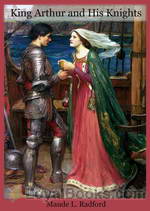 King Arthur and His Knights
King Arthur and His Knights
Published in 1903, King Arthur and His Knights by Maude L. Radford is an easy to read version of the Arthurian legends, made simple and interesting for children. Maude Lavinia Radford Warren was a Canadian born American who taught literature and composition at the University of Chicago between 1893-1907. Following the success of some of her books, she left teaching to take up writing as a full time career. She also served as a war correspondent for the New York Times magazine during WWI and contributed several remarkable features on the role of women in the conflict... | |
By: Max Brand (1892-1944) | |
|---|---|
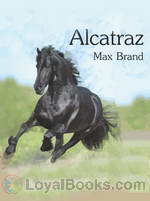 Alcatraz
Alcatraz
This is a story of a wild horse who many said could not be caught or broken, and the man who set out to prove them wrong. | |
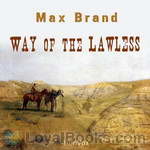 Way Of The Lawless
Way Of The Lawless
Young Andrew Lanning made one mistake in the beginning, and now the most feared lawman in the mountain desert, Hal Dozier, is on his trail and will stop at nothing to bring the outlaw Lanning to justice. But is Andrew guilty of all the things he is being accused of? There is one, a pretty young girl, who doesn't believe all she hears about him. Again, Max Brand shows us why he is the master of the pulp western. (Introduction by Richard Kilmer) | |
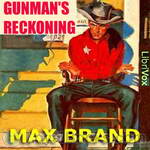 Gunman's Reckoning
Gunman's Reckoning
A typical early 20th century western. It's a tale of a tough guy who gets involved with an evil man with an angel daughter for whom the tough guy falls. His efforts to recover hers and her father's gold mine claims is the story. Not a lot of shoot em up but enough story to make one want to finish the book to see how things work out. (Introduction by Charles Montgomery) | |
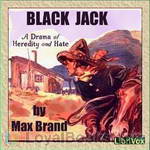 Black Jack
Black Jack
The son of a notorious outlaw is adopted into a wealthy, law-abiding family as an infant after his father is killed in an attempted robbery. Will he follow in the footsteps of his outlaw father or will his life be guided by the respectable woman who nurtured him to manhood? Another exciting tale by the master of the pulp western, Max Brand. | |
 Bull Hunter
Bull Hunter
Bull Hunter was a man who could rip a tree trunk from the ground with his bare hands or tame the wildest stallion with his kind manner. But Pete Reeve didn't have the reputation of a dead shot because he relied on his common sense. Then Bull and Pete crossed paths, and townsfolk braced for the battle. | |
By: Upton Sinclair (1878-1968) | |
|---|---|
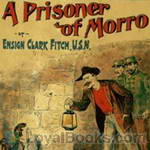 A Prisoner of Morro
A Prisoner of Morro
Upton Sinclair, born in 1878 was a Pulitzer Prize-winning American author. He wrote over 90 books in many genres. Best known for his muckraking novel, The Jungle, Sinclair also wrote adventure fiction. Many of these works were written under the pseudonym, Ensign Clark Fitch, U.S.N. A Prisoner of Morrow, published in 1898 when Sinclair was but 20 years old, is one of these efforts. The period for this work is the ten-week Spanish–American War which occurred in 1898. Revolts against Spanish rule had been prevalent for decades in Cuba and were closely watched by Americans... | |
By: Emma Orczy (1865-1947) | |
|---|---|
 The League of the Scarlet Pimpernel
The League of the Scarlet Pimpernel
Written by Baroness Orczy and first published in 1919, The League of the Scarlet Pimpernel is a sequel book to the classic adventure tale, The Scarlet Pimpernel. The book consists of eleven short stories about Sir Percy Blakeney’s exploits in rescuing various aristos and French citizens from the clutches of the guillotine. The stories which are listed below, are set in 1793 but appear in no particular order. They occasionally refer to events in other books in the series. | |
By: Publius Vergilius Maro (70 BC - 19 AD) | |
|---|---|
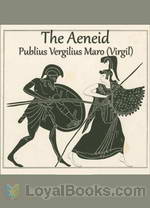 The Aeneid
The Aeneid
The Aeneid is a Latin epic written by Virgil in the 1st century BC that tells the legendary story of Aeneas, a Trojan who traveled to Italy, where he became the ancestor of the Romans. The first six of the poem’s twelve books tell the story of Aeneas’ wanderings from Troy to Italy, and the poem’s second half treats the Trojans’ ultimately victorious war upon the Latins, under whose name Aeneas and his Trojan followers are destined to be subsumed. The poem was commissioned from Vergil by the Emperor Augustus to glorify Rome... | |
By: George Alfred Henty | |
|---|---|
 The Cat of Bubastes
The Cat of Bubastes
G.A. Henty’s “tale of ancient Egypt” tells the story of Amuba, prince of the Rebu, who is taken captive when his people are conquered by the Egyptians, and then becomes the servant and companion of Chebron, son of the high priest of Osiris. A mystery unfolds as the lads find evidence of a murderous conspiracy within the ranks of the priesthood; but they must then flee for their lives when they unintentionally kill the cat selected as the successor to the Cat of Bubastes, one of the most sacred animals of Egypt. Amuba and Chebron are strong, courageous, and resourceful – but will this be enough to carry them beyond the long reach of the power of Egypt? | |
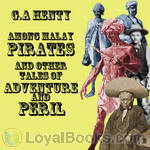 Among Malay Pirates and Other Tales of Peril and Adventure
Among Malay Pirates and Other Tales of Peril and Adventure
G. A . Henty was a prolific writer of historical fiction for young adults. In this collection of shorter stories we visit Malay pirates, have a couple of tales of India, a shipwreck off the Channel Islands and a bursting dam in California, and finish off escaping from captivity in China | |
 True to the Old Flag
True to the Old Flag
This book tells the story of the American war of Independence from the side of the British. The old flag mentioned in the title is the flag of England. This is a book for young readers, but - as a good book should be - everybody can enjoy it". | |
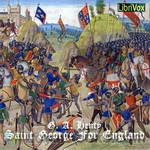 St George for England
St George for England
A tale set in England in the time of Cressy and Pointiers. A child of noble birth whose parents have fallen foul of the current royalty is taken by his dying mother and placed in hiding. He grows up with a bowyer and then apprenticed to an armourer just outside the gates of the City of London, becomes accomplished in arms and joins the campaign in France.A tale of heroism and 14th century viciousness. Great fun. | |
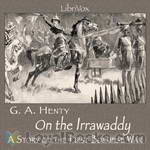 On the Irrawaddy, A Story of the First Burmese War(1897)
On the Irrawaddy, A Story of the First Burmese War(1897)
With the exception of the terrible retreat from Afghanistan, none of England's many little wars have been so fatal--in proportion to the number of those engaged--as our first expedition to Burma. It was undertaken without any due comprehension of the difficulties to be encountered, from the effects of climate and the deficiency of transport; the power, and still more the obstinacy and arrogance of the court of Ava were altogether underrated; and it was considered that our possession of her ports would assuredly bring the enemy, who had wantonly forced the struggle upon us, to submission... | |
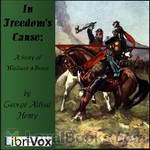 In Freedom's Cause
In Freedom's Cause
Another stirring tale from the master of historical fiction set in the time of Robert Bruce and William Wallace and their struggle for Scotland's independence. | |
By: Andy Adams (1859-1935) | |
|---|---|
 Cattle Brands
Cattle Brands
Cattle Brands is a collection of 14 entertaining short stories depicting not only the life of cowboys in the wild, wild West, but also the harrowing skirmishes with banditos, thrilling shoot-outs, attempt at and the recapture of stolen chattel from fierce desperados, and much, much more exciting accounts that make one think it all actually happened. | |
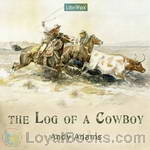 The Log of a Cowboy
The Log of a Cowboy
The Log of a Cowboy is an account of a five-month drive of 3,000 cattle from Brownsville, Texas, to Montana in 1882 along the Great Western Cattle Trail. Although the book is fiction, it is firmly based on Adams's own experiences on the trail, and it is considered by many to be the best account of cowboy life in literature. Adams was disgusted by the unrealistic cowboy fiction being published in his day; The Log of a Cowboy was his response. It is still in print, and even modern reviewers consider it a compelling classic... | |
 The Outlet
The Outlet
Andy Adams worked as a cowboy on trail drives from Texas for eight years. This is an account of a drive when he was the foreman of a herd of Texas cattle being driven to Montana. Expect the same quality writing as found in other books by Adams. | |
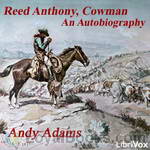 Reed Anthony, Cowman: An Autobiography
Reed Anthony, Cowman: An Autobiography
Adams breathes life into the story of a Texas cowboy who becomes a wealthy and influential cattleman.. (Introduction by Wikipedia) | |
By: Mrs. L. T. Meade (1854-1914) | |
|---|---|
 The Rebel of the School
The Rebel of the School
Kathleen O’Hara is a young pretty girl sent to school in England from Ireland by her father to get a good education, but Kathleen has other ideas. She quickly become friends with the girls of the school who don’t pay for their education and in turn these girls consider Kathleen to be their Queen. What trouble will Kathleen and her friends get into? And what will the school do with the naughty, “Rebel of the School?” | |
By: Algernon Blackwood (1869-1951) | |
|---|---|
 The Camp of the Dog
The Camp of the Dog
A party of campers on a deserted Baltic island is terrorized by a huge wolf… or is it? | |
By: George Manville Fenn (1831-1909) | |
|---|---|
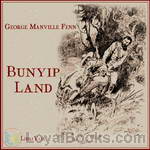 Bunyip Land
Bunyip Land
Joe Carstairs is a boy on a farm in Australia. His father is a keen naturalist who, some years before had set off for New Guinea in search of specimens, and never been heard of again. Joe is old enough to mount a search expedition, and takes with him a local doctor and an aboriginal worker on his farm. They find themselves joined by a stowaway, Jimmy, whose father is a squatter (farmer) nearby, together with his dog, Gyp.This team sets off, arrive in New Guinea, hire some more porters, and travel guided by some sixth sense straight to where Mr... | |
 Peril Finders
Peril Finders
In California settlers are trying to make a living working as fruit-growers. Problems with blights and insects mean that the crops are failing. A prospector arrives and tells stories of ancient cities where there is a lot of gold. He then dies. Some of the settlers decide to go and search for the gold. They have long distances to travel and meet many challenges along the way. They eventually reach one of these cities and find evidence that it has been abandoned by invaders hundreds or thousands of years ago... | |
 Cutlass and Cudgel
Cutlass and Cudgel
Based around the crew of cutter HMS White Hawk, this is a tale of smuggling in the early 19th century off the coast of Wessex. The midshipman of the cutter is taken hostage by the smugglers and is befriended by a farm-boy, son of one of the smugglers. His friendship is rudely rebuffed, the midshipman eventually escapes and the farm-boy gets his long-held dream of becoming a seaman on an Excise vessel. | |
By: H. G. Wells (1866-1946) | |
|---|---|
 The War in the Air
The War in the Air
War in the Air was written during a prolific time in H. G. Wells's writing career. Having withdrawn from British politics to spend more time on his own ideas, he published twelve books between 1901 and 1911, including this one. while many British citizens were surprised by the advent of World War I, Wells had already written prophetically about such a conflict. War in the Air predicted use of airplanes in modern war. | |
 In the Days of the Comet
In the Days of the Comet
William ("Willie") is a student living in the British town of Clayton. As a Socialist, he tries to move power from the upper class to the working class. Interestingly, in a fictitious confrontation Britain declares war on Germany. Willie falls in love with Nettie, but when she elopes with an upper-class man, Willie resolves to kill them both. Throughout the novel there is present in the sky a large comet which gives off a green glow. As Willie prepares to shoot the lovers, two battleships appear and begin shelling the coast, causing Willie to nearly lose his targets... | |
By: Sax Rohmer (1883-1959) | |
|---|---|
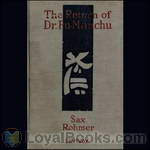 The Return of Dr. Fu-Manchu
The Return of Dr. Fu-Manchu
Burmese Commisioner Nayland Smith and his faithful friend Dr Petrie continue their fight against the evil genius of Dr Fu-Manchu when they seek to save the good doctor’s lost love and protect the British Empire from disaster when their malignant enemy returns to England. | |
 The Hand of Fu-Manchu
The Hand of Fu-Manchu
Further adventures of Nayland Smith and Doctor Petrie as they continue their battles against the evil genius, Dr Fu-Manchu. | |
 The Insidious Dr. Fu-Manchu
The Insidious Dr. Fu-Manchu
The first of the Fu-Manchu novels this story follows the two characters who are set against the machinations of the insidious doctor. | |
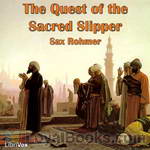 The Quest of the Sacred Slipper
The Quest of the Sacred Slipper
Cavanagh becomes involved in the adventurous search for a precious relic in the mysterious East. (Introduction by Laineyben) | |
By: William Shuler Harris (b. 1865) | |
|---|---|
 Life in a Thousand Worlds
Life in a Thousand Worlds
A jolly romp, which could be perhaps be described as Gulliver’s Travels Through Our Solar System and Beyond, as written by a great admirer of C. S. Lewis, on a rainy Sunday afternoon, after one too many mugs of cocoa. Includes some thought on alien philosophies and how to apply them to moral and social problems here on Planet Earth. | |
By: Theodore Roosevelt | |
|---|---|
 Through the Brazilian Wilderness
Through the Brazilian Wilderness
Roosevelt’s popular book Through the Brazilian Wilderness describes his expedition into the Brazilian jungle in 1913 as a member of the Roosevelt-Rondon Scientific Expedition co-named after its leader, Brazilian explorer Cândido Rondon. The book describes all of the scientific discovery, scenic tropical vistas and exotic flora, fauna and wild life experienced on the expedition. One goal of the expedition was to find the headwaters of the Rio da Duvida, the River of Doubt, and trace it north to the Madeira and thence to the Amazon River... | |
By: Waldemar Bonsels (1880-1952) | |
|---|---|
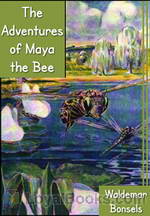 The Adventures of Maya the Bee
The Adventures of Maya the Bee
A little bee is born in a large and busy hive. At that time, the hive is going through a period of unrest and there are fears that it will become subdivided into separate colonies. The little new-born, Maya, is under the care of a strict but loving teacher. One day, driven by curiosity and rebellion, Maya escapes from the safe environs of the hive and flies into the forest. Here, she encounters all sorts of interesting, exciting, frightening and funny things. The Adventures of Maya the Bee is the story of the intriguing days that follow... | |
By: Joseph E. Badger, Jr (1848-1909) | |
|---|---|
 The Lost City
The Lost City
Bruno and Waldo Gillespie are orphaned brothers living with the extremely eccentric Professor Phaeton Featherwit. One day they set off in one of the professor’s machines to investigate a tornado at close range and accidentally get sucked into it! They are then transported by the tornado and find themselves in a barren, uncharted wasteland wherein lies a city– a long lost Aztec city! Find out what happens next to the brothers and the professor in this harrowing and exhilarating adventure! | |
By: Frank Pinkerton | |
|---|---|
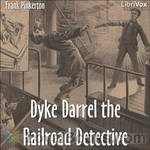 Dyke Darrel the Railroad Detective
Dyke Darrel the Railroad Detective
Dyke Darrel investigates an audacious train robbery that included the murder of a friend, and embarks on a man-hunt. High Victorian serial melodrama at its best! | |
By: Robert Ervin Howard (1906-1936) | |
|---|---|
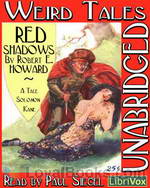 Red Shadows
Red Shadows
Red Shadows is the first of a series of stories featuring Howard’s puritan avenger, Solomon Kane. Kane tracks his prey over land and sea, enters the jungles of Africa, and even faces dark Gods and evil magic — all to avenge a woman he’d never met before. | |
By: Frederick Marryat (1792-1848) | |
|---|---|
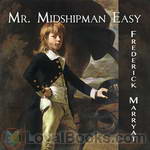 Mr. Midshipman Easy
Mr. Midshipman Easy
One of the first novel-length pieces of nautical fiction, MR. MIDSHIPMAN EASY (1836) is a funny and easygoing account of the adventures of Jack Easy, a son of privilege who joins the Royal Navy. The work begins as a satire on Jack’s attachment to “the rights of man” that may try the listener’s patience. But despair not, for the story soon settles down as the philosophical midshipman begins his many triumphs over bullies, foul weather, and various damned foreigners of murderous intent.Caveat audiens: This novel employs racial/ethnic epithets and religious stereotypes, as well as taking a rather sunny view of supply-side economics... | |
 Snarleyyow
Snarleyyow
This is a quite amusing nautical tale of the British Navy of the around the year 1700. While, as with much early 'humor', it is somewhat heavy-handed, the sympathies of the author are clear and good, and cruelty is often averted by good fortune or background characters. First published under the title 'The Dog Fiend', the primary characters are an evil captain of a cutter and his dog. The dog seems indestructible, as is the poor cabin boy who is the butt of the captain's ill humor, and who often is chewed on by the dog... | |
By: Plague Ship (1912-2005) | |
|---|---|
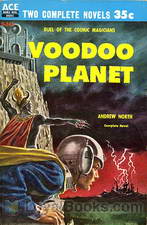 Voodoo Planet
Voodoo Planet
The sequel to Plague Ship, Voodoo Planet finds the Solar Queen banned from trade and starting her supposed quiet two-year stint as an interstellar mail carrier. But instead her crew accepts a visit to the safari planet of Khatka, where they find themselves caught in a battle between the forces of reason and the powers of Khatka’s mind-controlling wizard. | |
By: Nat Love (1854-1921) | |
|---|---|
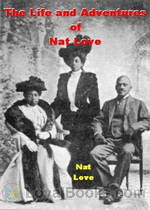 The Life and Adventures of Nat Love, Also Known As Deadwood Dick
The Life and Adventures of Nat Love, Also Known As Deadwood Dick
Nat Love was born a slave, emancipated into abject poverty, grew up riding the range as a cowboy and spent his maturity riding the rails as a Pullman Porter. For me, the most amazing thing about him is that despite the circumstances of his life, which included being owned like a farm animal solely because of the color of his skin and spending later decades living and working as an equal with white coworkers, he was an unrepentant racist! Convinced that the only good Indian was a dead one, and that... | |
By: Frank L. Packard (1877-1942) | |
|---|---|
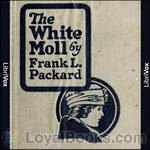 The White Moll
The White Moll
Frank Lucius Packard (February 2, 1877 – February 17, 1942) born in Montreal, Quebec, was a Canadian novelist. Packard is credited with bridging the gap from the “cozy” style mysteries to the more gritty, hard-boiled style of such writers as Dashiell Hammet and Raymond Chandler. Packard also wrote a series of novels, beginning in 1917, featuring Jimmie Dale. A wealthy playboy by day, at night, Jimmie becomes a crimefighter “The Gray Seal” complete with mask and secret hide-out, “The Sanctuary”... | |
By: Henry Fielding (1707-1754) | |
|---|---|
 Journal of a Voyage to Lisbon
Journal of a Voyage to Lisbon
Sailing voyage from England to Portugal in the mid Eighteenth Century, by one of the premier humorists, satirists, novelists and playwrights of his age. It was to be his last work, as his failing health proved unable to persevere much longer after the voyage. | |
By: William Morris (1834-1896) | |
|---|---|
 Völsungasaga
Völsungasaga
The 13th century Icelandic Völsungasaga is usually read by people studying the Poetic Edda or Wagner’s Ring – which obscures the fact it is a much better story than practically everything derived from it. A riddle-telling dragon, a broken sword, a hooded mysterious wanderer – cannibalism, incest, mutilation, and sensitive hearts. This is R-rated Tolkien – and the unashamedly archaic Magnússon-Morris translation is up for the adventure.Passages spoken in Old Norse are taken from the edition of Sophus Bugge, Berlin, 1891. | |
 The Well at the World's End, Book 1: The Road unto Love
The Well at the World's End, Book 1: The Road unto Love
The Well at World's End is thought to be one of the first examples of an entirely fictional fantasy world, and has greatly influenced later fantasy writers such as C.S. Lewis and J.R.R. Tolkien. The book follows the travels of Ralph, a prince of a tiny country, as he disobeys his fathers wishes and runs away from home to adventure in the world, and seek out the fabled Well at World's End, said to grant eternal youth to those who drink from it. | |
By: Grace Livingston Hill (1865-1947) | |
|---|---|
 The Best Man
The Best Man
Cyril Gordon, a young and handsome secret service agent is running from pursuers who desperately want the information he holds. He hides out from them in a church, and then finds himself married to a woman he’s never seen before. A sweet and sometimes, funny, romance, with several exciting chases. | |
By: Ernest William Hornung (1866-1921) | |
|---|---|
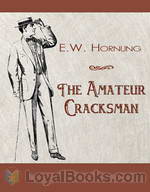 The Amateur Cracksman
The Amateur Cracksman
“I’d tasted blood, and it was all over with me. Why should I work when I could steal? Why settle down to some humdrum uncongenial billet, when excitement, romance, danger and a decent living were all going begging together” – A. J. Raffles, The Ides of March. | |
By: William Clark Russell (1844-1911) | |
|---|---|
 The Frozen Pirate
The Frozen Pirate
Sailing adventure with storms, icebergs, shipwrecks, treasure, and the reawakening of a pirate frozen in suspended animation for nearly fifty years | |
By: William Dean Howells (1837-1920) | |
|---|---|
 Indian Summer
Indian Summer
In his novel Indian Summer, William Dean Howells presents a mellow but realistic story that has the complete feel of that delightful time of the year, although the plot actually spans several seasons. The Indian summer aspect applies to a sophisticated gentleman, Theodore Colville, who has just entered his middle years as he returns to a scene, Florence, Italy, that played an important part in his early manhood. It was here twenty years earlier that he first fell in love, seemingly successfully until a sudden and harsh rejection... | |
By: Mary Godolphin (1781-1864) | |
|---|---|
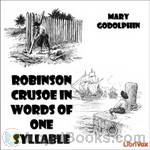 Robinson Crusoe in Words of One Syllable
Robinson Crusoe in Words of One Syllable
Mary Godolphin was the pseudonym of Lucy Aikin who undertook translating great literature into single-syllable words so that young readers could enjoy plots that were considerably more interesting than, say, the McGuffey readers of the 1880’s or the “Dick and Jane” primers of the 1950s (still around today as “decodable readers” in elementary schools). She produced this volume based on Daniel Defoe’s most famous work, considered by many to be the first English novel (1719). She also rendered Bunyan’s Pilgrim’s Progress and Wyss’ Swiss Family Robinson, which she translated as well. | |
By: L. Frank Baum (1856-1919) | |
|---|---|
 Aunt Jane's Nieces at Work
Aunt Jane's Nieces at Work
The novel carries forward the continuing story of the three cousins Louise Merrick, Beth De Graf, and Patsy Doyle, and their circle. The title is somewhat misleading; it could more accurately have been called Aunt Jane's Nieces in Politics. (Uncle John Merrick tells his nieces that politics is "work," which yields the title.)The story begins three days after the end of the previous book, Aunt Jane's Nieces at Millville; the freckled and red-haired Patsy still sports a sunburn from her summer in the Adirondacks... | |
 Aunt Jane's Nieces In The Red Cross
Aunt Jane's Nieces In The Red Cross
The 10th and final book in the series for adolescent girls sees two of the three cousins react to atrocities in World War I by volunteering in the Red Cross. Written under the pseudonym of Edith Van Dyne, this is the 1915 version, which reflects United States' neutrality. A later version, published in 1918, differed significantly to reflect changes in the position of the United States. | |
 Policeman Bluejay
Policeman Bluejay
This is another "TWINKLE TALE" from Mr. Baum (written under the pen name Laura Bancroft) and celebrates the further adventures of Twinkle and Chubbins as they magically become child-larks and live the exciting, and often dangerous, life of birds in the forest. | |
 Aunt Jane's Nieces In Society
Aunt Jane's Nieces In Society
Written under pseudonym of Edith Van Dyne. The story continues the adventures of three cousins, Louise, Patsy and Beth,with their debuts in society and the appearance of suitors, one of whom is rejected and kidnaps Louise. | |
By: E. E. Smith (1890-1965) | |
|---|---|
 Skylark Three
Skylark Three
This is a sequel to The Skylark of Space. The novel concerns Richard Seaton and his allies who have encounters with aliens while fighting DuQuesne and the Fenachrone.. | |
By: Bret Harte (1836-1902) | |
|---|---|
 Mrs. Skagg's Husbands and Other Stories
Mrs. Skagg's Husbands and Other Stories
A collection of short stories set in the American West at the end of the 19th century. | |
By: William Harrison Ainsworth (1805-1882) | |
|---|---|
 Rookwood
Rookwood
A rich and complex Gothic-Romance centring on the murky deeds of an ancient family. It is a wonderfully atmospheric piece that combines narrative, poetry, song, and descriptive writing to great effect. The character of Dick Turpin that we know today – the dashing highwaymen and unmatched horseman – can be said to stem directly from this novel, as the most famous part of the book (often published on its own in the past), Turpin’s Ride To York, is devoted to him. Although seemingly little known to a modern audience, Ainsworth’s ‘Rookwood’ gave the world the image of the highwayman with which we are all so familiar. | |
 Windsor Castle, Book 1
Windsor Castle, Book 1
Book 1 - Ann Boleyn. The focus of the novels is on the events surrounding Henry VIII's replacing Catherine of Aragon with Anne Boleyn as his wife. During Henry's pursuit of Boleyn, the novel describes other couples, including the Earl of Surrey and Lady Elizabeth Fitzgerald, a match Henry does not support. However, some of the individuals oppose Henry and his desires for Boleyn, including Thomas Wyat who wants her for himself and Cardinal Wolsey, who uses his own daughter, Mabel Lyndwood, to lure Henry away from Boleyn... | |
By: Richard Jefferies (1848-1887) | |
|---|---|
 After London, or Wild England
After London, or Wild England
First published in 1885, After London, or Wild England is considered to be one of the earliest instances of post-apocalyptic fiction, describing the effects of an unspecified catastrophe that dramatically changes the face of England and its population. Divided into two parts, the first depicts the fall of civilization, as society reverts to its more primitive roots, while the second part is set years after the apocalyptic event and examines the evident changes in both natural scenery and social structure... | |